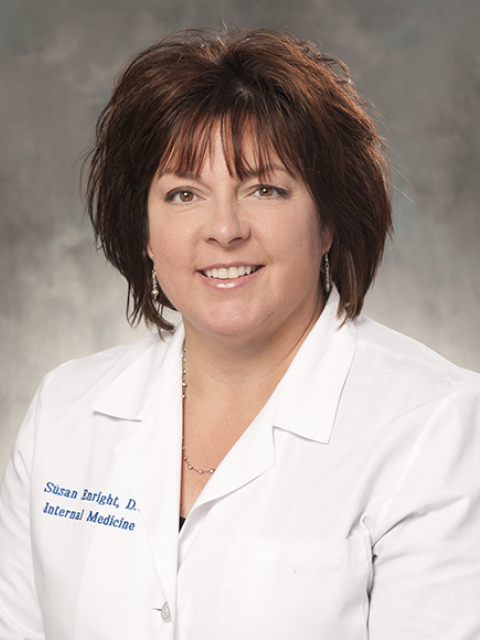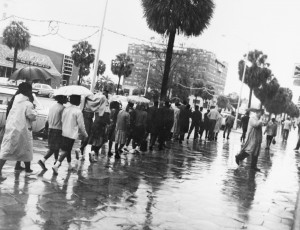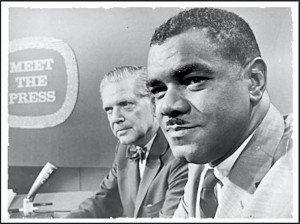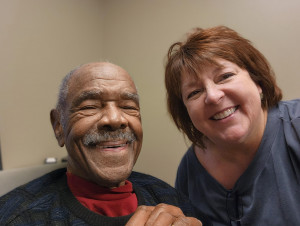
William Anderson, DO: A Legacy of Leadership in Medicine and Civil Rights
by Susan M. Enright, DO, MACOI
ACOI President
February 3, 2025
“I’m a criminal and proud of it!” William G. Anderson, DO, admits in his opening statement when I asked permission to interview him for this article. As a “criminal,” he is referring to the times he was incarcerated for civil disobedience. Dr. Anderson considers these convictions as badges of honor he proudly wears.
I have had the honor of meeting Dr. Anderson several times over the years, and each time aware I am in the presence of greatness. He is humble man who has achieved so much in his career and life. Some of his achievements include being a Navy veteran, being the first Black surgical resident in Detroit, the first Black president of the AOA, and the first president of the Albany Movement. Even in his 90s, Dr. Anderson is routinely present at the Michigan State University College of Osteopathic Medicine, interacting with faculty, staff, and students on a regular basis. Dr. Anderson embodies leadership, resilience, and dedication.
Dr. Anderson grew up in a small rural town in southwest Georgia called Americus. Like other communities in the south, Americus was totally segregated. He attended Fort Valley State, a small college in the heart of Georgia known for its agriculture programs at the time. He enrolled in a premed curriculum with the hopes of getting into medical school, but knew the challenges he would face getting into a medical school as a Black man. He was 15 years old when he started at Fort Valley State, and like many young men at that time, was motivated to enter the military in defense of his country during the time of World War II. When old enough, he volunteered and was part of the first test company of men for integration in the Navy during the administration of President Harry Truman. Dr. Anderson is a man of many firsts! Upon discharge and returning to Fort Valley State, he met and married the love of his life, Norma.
Dr. Anderson entered mortuary science schooling in Atlanta, his wife’s hometown, while continuing his efforts to be accepted into a medical school. Norma and Dr. Anderson lived with Norma’s family during this time. Growing up across the street from Norma’s family was a young Martin Luther King Jr. In a book I read about Dr. Anderson (Autobiographies of a Black Couple of the Greatest Generation by Norma and William Anderson), his description of a young Martin Luther King Jr. is quite entertaining. Martin Luther King Jr. and Norma’s younger brother wanted to be preachers and would very often practice (and practice and practice!) their preaching together. Dr. Anderson reflects in the book that little did he know at the time he was being irritated by one who would become a leader of a major revolution and impact many generations!
Once he graduated from mortuary science school, Dr. Anderson got his first job in mortuary science in Montgomery, Alabama. At the same time, he was able to continue his education at Alabama State College, continuing to work toward medical school. At this college, he gained a very close friend with aspiring preacher Ralph David Abernathy. Dr. Anderson feels he was impacted by a divine plan several times in his life. Becoming close friends with Abernathy, who would become the right-hand man of Dr. Martin Luther King Jr., was one of those times.
Meeting Willie Joe Reese, DO, in Albany, Georgia, was another time Dr. Anderson felt impacted by a divine plan. Dr. Reese was a close friend of Dr. Anderson’s father and had the most successful family practice office in Albany. With Dr. Reese’s assistance, Dr. Anderson was provided with the opportunity to interview with the Des Moines school. He was accepted to the school and moved north. He supported himself and his family through medical school by working in both mortuary science and as a radio announcer at a small radio station. Dr. Anderson was interested in training at Flint Osteopathic Hospital (FOH), with a reputation of being one of the best training hospitals for osteopathic students. He was the first Black trainee at FOH both as an extern and intern. Similar to his efforts to get into medical school, he faced difficulties because of his race when trying to secure a surgical residency. Instead of a surgical residency, Dr. Anderson, with his wife’s urging to keep his pledge to return to practice where he was needed, returned to Albany, Georgia.
Dr. Anderson quickly acclimated to Albany, demonstrated by a booming practice and his involvement in the community. He describes himself as a man born hating segregation, and wanted to help promote opportunities for Black people in his community. He invested in Black owned businesses. One such business was a pharmacy and drug store where his patients could shop in a store that provided them with dignity and respect. He met regularly with other community leaders and civil rights organizations to discuss the problems of segregation and discrimination.

The Albany Movement. Courtesy of Georgia Archives.
The Albany Movement, the first movement to desegregate a city and create social change, was formed by the leaders and civil rights organizations in his community. Dr. Anderson was chosen to lead this organization. Calling upon his close friends, Drs. King and Abernathy, brought much attention to the Albany Movement. This non-violent Movement, with its many rallies and marches, also led to many arrests for those participating. Dr. Anderson recalls one such time when he was jailed with Drs. King and Abernathy. Dr. King was supposed to be on "Meet the Press" but preferred to remain in jail and sent Dr. Anderson instead. Dr. Anderson looks upon the Albany Movement as a great success that began integration within his community. Dr. Anderson's journey is a testament to the power of activism and the importance of community-driven change.

Dr. Anderson on Meet the Press. Library of Congress, Prints and Photographs Division, NYWT&S Collection, [reproduction number, LC-USZ62-135780].
After spending one year as a nighttime house physician at the Art Centre Hospital in Detroit, Michigan, Dr. Anderson received an offer to enter a surgical residency. He spent the remainder of his career in Michigan, impacting not only patients, but medical education in general. Dr. Anderson became President of the American Osteopathic Association in 1994. His advice to Internal Medicine physicians—and to all medical professionals—goes beyond clinical expertise. As it was in the 1960s civil rights movement when preachers and physicians were seen as leaders of change, he believes that to be true today. He believes physicians remain leaders of change in society and laws to make life a little better for the people we serve.
It was truly my honor to spend time with Dr. Anderson, a resilient and dedicated leader (and a criminal!).

Dr. Anderson and Dr. Enright.
References:
- Norma L. Anderson, William G. Anderson, D.O., and Pat Grauer (2004). Autobiographies of a Black Couple of the Greatest Generation.
- Detroit Man was on phone with Martin Luther King Jr.’s wife during assassination. Detroit Free Press. https://www.freep.com/story/news/local/michigan/detroit/2022/01/16/martin-luther-king-junior-william-anderson-detroit/6516032001/
- William G. Anderson. Georgia Encyclopedia.
https://www.georgiaencyclopedia.org/articles/history-archaeology/william-g-anderson-b-1927/

